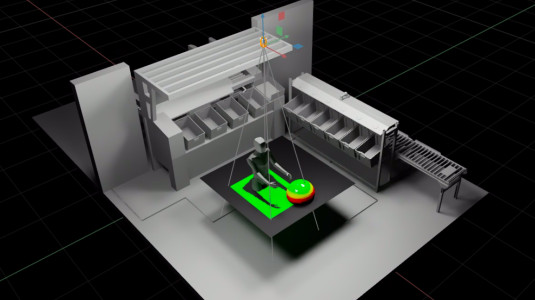Customer-obsessed science


Research areas
-
August 26, 2025With a novel parallel-computing architecture, a CAD-to-USD pipeline, and the use of OpenUSD as ground truth, a new simulator can explore hundreds of sensor configurations in the time it takes to test just a few physical setups.
Featured news
-
2024We introduce flexibility to the supervised learning-based speech enhancement framework to achieve scalable and efficient speech enhancement (SESE). To this end, SESE conducts a series of segmented speech enhancement inference routines, each of which incrementally improves the result of its preceding inference. The formulation is conceptually similar to cold diffusion, while we modify the sampling process
-
2024Computing the optimal transport distance between statistical distributions is a fundamental task in machine learning. One remarkable recent advancement is en- tropic regularization and the Sinkhorn algorithm, which utilizes only matrix scaling and guarantees an approximated solution with near-linear runtime. Despite the success of the Sinkhorn algorithm, its runtime may still be slow due to the potentially
-
DesignCon 20242024Ethernet speeds of 112Gbps/lane pose significant challenges for designing switch systems to meet increased throughput demands of today’s data centers with high traffic volumes from artificial intelligence (AI) servers. Due to increased PCB losses at such high frequencies, fly-over cables are being promoted for the longest length channels. Fly-over cables pose manufacturing reliability and mechanical challenges
-
AAAI 2024 Workshop on AI for Financial Services2024Timely and accurate reconciliation of the company’s finan-cial information is an important internal control over the company’s financial reporting to support quarterly and annual external financial compliance activities. However, due to the complexity of typical end-to-end business system integrations, the process to research and investigate reconciliation items can be manual and time consuming. This paper
-
TACAS 20242024Generating proofs of unsatisfiability is a valuable capability of most SAT solvers, and is an active area of research for SMT solvers. This paper introduces the first method to efficiently generate proofs of unsatisfiability specifically for an important subset of SMT: SAT Modulo Monotonic Theories (SMMT), which includes many useful finite-domain theories (e.g., bit vectors and many graph-theoretic properties
Academia
View allWhether you're a faculty member or student, there are number of ways you can engage with Amazon.
View all





























